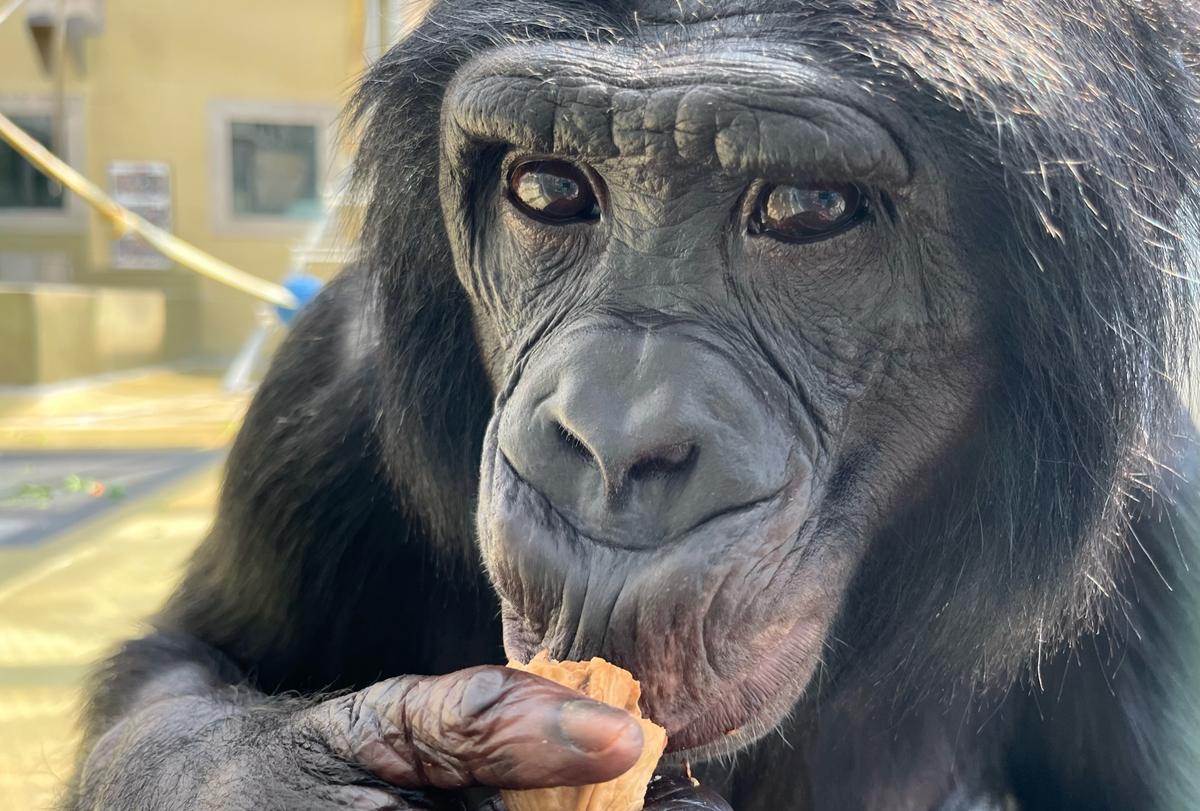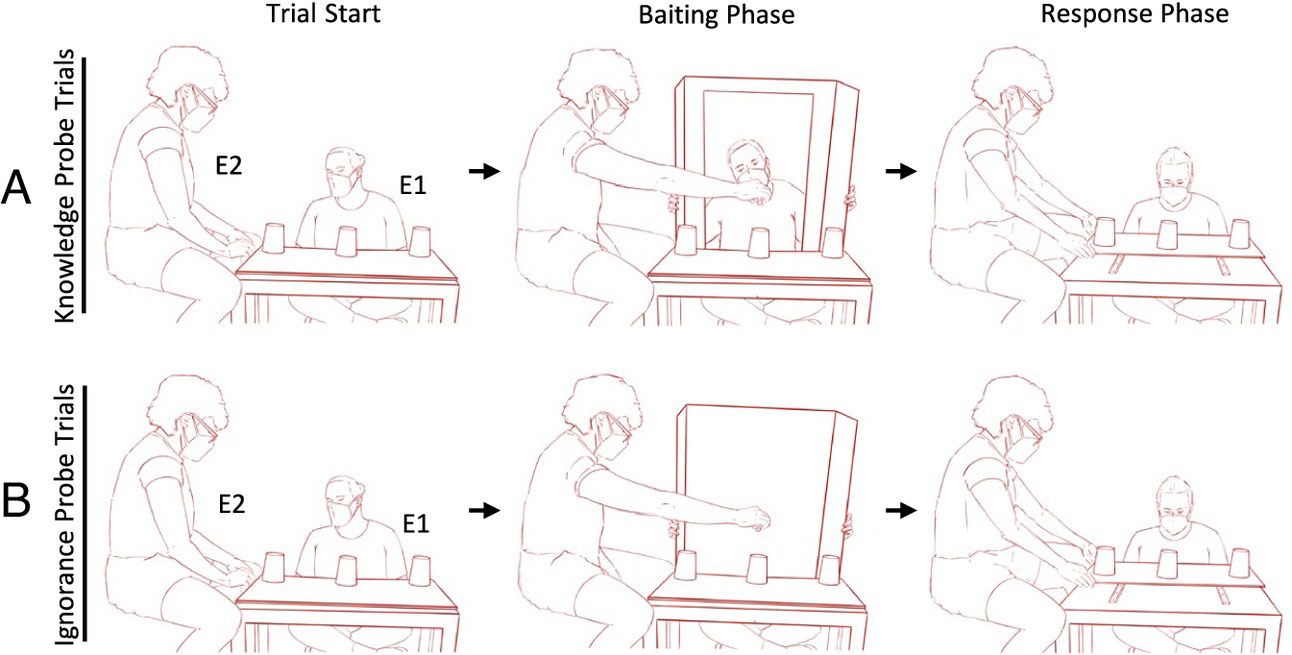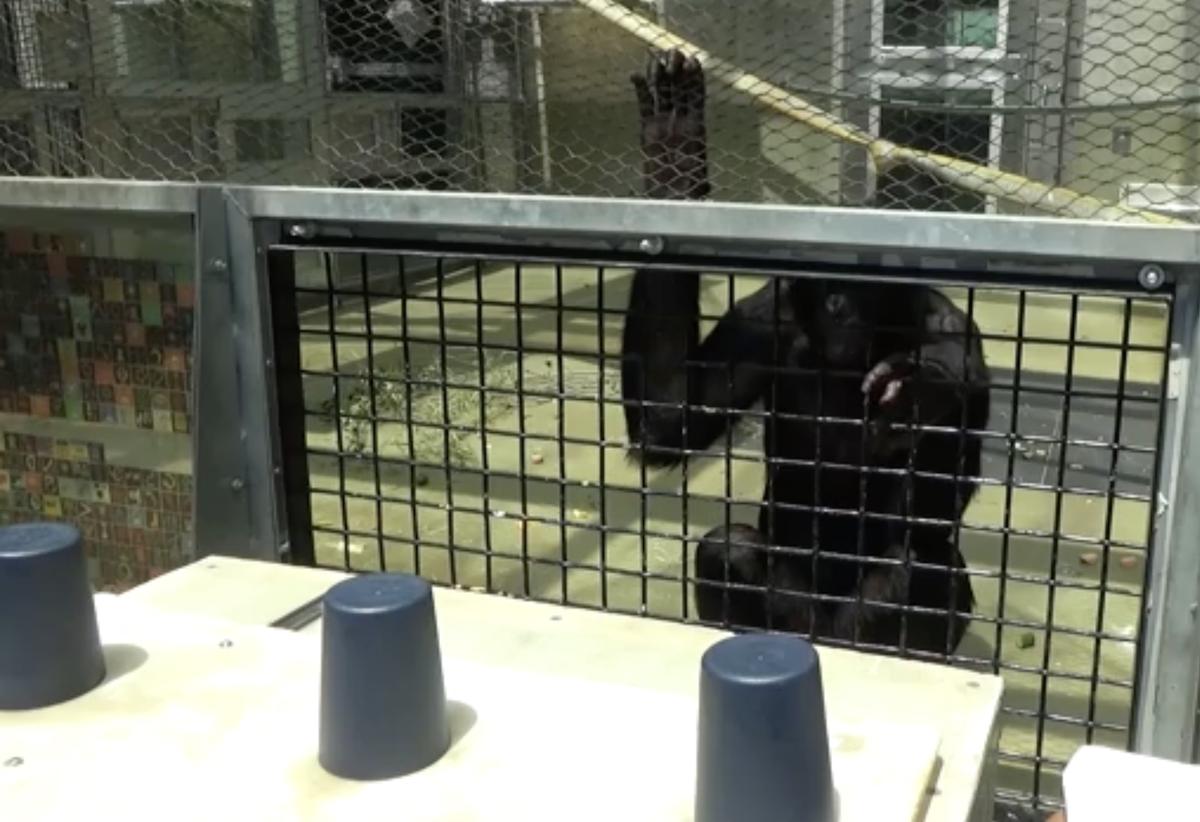As humans, we can think about what other people are thinking, and understand that their ideas might be different from ours. Scientists call this “theory of mind”. An important question is whether animals can do the same. A recent experiment suggests that bonobo apes may share this ability.
Humans spend a lot of their time working together, sharing information, and helping each other out. “Theory of mind” – being able to imagine what someone else might be thinking – is an important part of human success.
Scientists have long wondered whether any other animals share this ability. There are signs that some animals may. For example, chimpanzees have been seen warning others about a nearby snake, when they believe other chimps haven’t seen the snake yet.

(Source: Ape Initiative.)
A recent experiment suggests that bonobos can also think about what others are thinking.
Bonobos are very intelligent apes. They have been taught to communicate using signs or symbols. They’re also known for being friendly, and often solve problems by working together.
To study how bonobos think, researchers at Johns Hopkins University came up with a clever experiment. The scientists worked with three male bonobos at a special research center called the Ape Initiative. The goal of the experiment was to see whether the apes could understand when a human didn’t know something.
In the experiment, scientist Luke Townrow sat across a table from a bonobo. Another scientist hid a small snack, like a grape, under one of three cups that were turned upside down on the table.

(Source: [CC BY-NC-ND], PNAS.)
The bonobo was always able to watch the snack being hidden. The ape was also able to see Mr. Townrow. But half of the time, Mr. Townrow wasn’t able to see which cup the snack was hidden under.
The researchers wanted to see if the bonobos acted differently when they knew that Mr. Townrow didn’t know where the snack was hidden.
Once the treat was hidden, Mr. Townrow always acted the same. He would look at the cups and say, “Hmm, where is the grape?” And he would wait for 10 seconds, giving the bonobos time to respond.
The results showed that when Mr. Townrow hadn’t seen where the snack was hidden, the bonobos pointed to the cup with the hidden treat more quickly, and much more often.

(Source: [CC BY-NC-ND], PNAS.)
The experiment suggests that the bonobos were able to think about what Mr. Townrow knew. They seemed to understand that Mr. Townrow didn’t know something that they did.
The experiment wasn’t perfect. There were only three bonobos in the study. And one of the bonobos seemed to point all the time, no matter what. Also, some scientists have pointed out that these bonobos grew up around humans, and might not represent wild bonobos.
Still, the results show that the bonobos have a “theory of mind”. They have the ability to think about what others are thinking, and can change their behavior to communicate when someone is missing important information.
Did You Know…?
Humans and other apes all developed from an earlier kind of ape that lived long ago. Scientists say it’s possible that this shared ancestor also had the ability to think about what others might be thinking. This skill may have helped these ancient apes work together.
